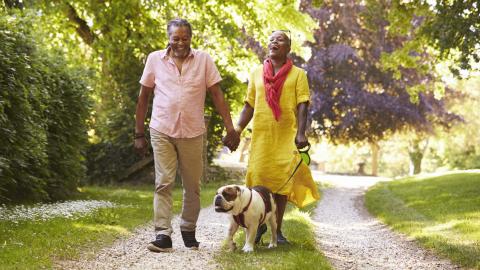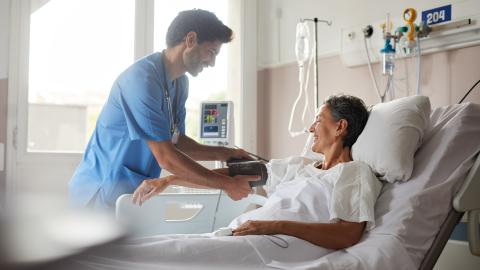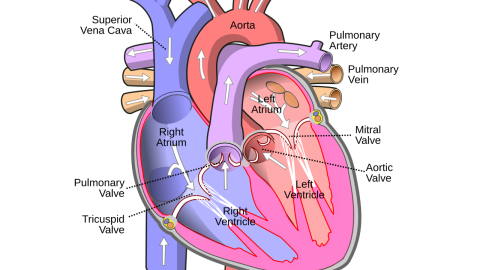Your recovery at home after cardiac surgery: activity and exercise

Keeping active is one of the best ways to keep healthy and recondition your heart muscle. Activity also helps build strength, improves circulation, and makes you feel better.
Cardiac Rehabilitation
Cardiac rehabilitation is a specialized program that provides rehabilitation services for cardiac patients and those at risk for developing cardiovascular disease. You will work with a variety of health professionals, but you will be the most important member of this team.
The Care Management Leader (CML) on the cardiac surgery unit will send a referral to the cardiac rehabilitation program (also known as a Healthy Heart program) closest to where you will stay when you go home. If you can, attending a cardiac rehabilitation program after you have been discharged is recommended to help support you in your recovery.
The cardiac rehabilitation program will help you learn about:
- Your heart health and strategies to decrease the chance of more heart problems.
- Safe and heart-healthy activities.
- How to return to your work and your hobbies.
Rest
Rest is essential for your recovery. Your body heals when you are resting. It may take your body some time to find a balance between activity and rest. Be patient as your body and energy levels improve over time.
- Try to get at least eight hours of sleep each night.
- Take short naps or rest breaks as needed during the day.
- Aim for at least two 30-to-60-minute rest periods each day during the first week at home.
- Plan your day to allow time for both rest and activity.
- Take things one day at a time.
- Listen to your body. It will tell you if you are doing too much too soon.
Activity
Keeping active is one of the best ways to keep healthy and recondition your heart muscle. Activity also helps build strength, improves circulation, and makes you feel better. Regular activity reduces the risk of chest pain or discomfort by improving blood supply and heart muscle function. Any amount of activity is better than none at all.
Below are some general activity guidelines. Please confirm with your physiotherapist and health-care team.
- Be active when you feel rested, such as first thing in the morning or after a nap.
- Slowly increase your activity. Let discomfort be a general guide to what you do and how often you do it.
- Try to go for daily walks.
- If this is not possible, aim for at least three times a week. Avoid walking during the hottest or coldest time of the day. Avoid exercise in extreme temperatures. Shopping malls provide an excellent place to walk.
- Walk with someone or in a safe public place.
- Discuss the duration and distance of walking with your health-care team or primary care provider. A general guideline is to start with the same amount of walking you did in the hospital and gradually increase the amount.
- Exercise may include cultural land-based activities.
- Gradually resume your activities, starting with lighter weights and increasing as you feel comfortable. If you are on sternal precautions, lift weights under five to 10 pounds.
- Avoid forceful overhead reaching that causes pain at your incision site(s).
- Always move/use your arms in your pain-free range of motion.
General guidelines for daily exercise
- Continue with your deep breathing and coughing exercises.
- Moderate-intensity exercise is vital to maintain/improve your general strength and independence and prevent complications caused by inactivity.
- High-intensity exercise is inappropriate and should only be resumed once your primary care provider or cardiologist/internist gives you the okay.
- Begin walking daily. Walk at a comfortable, moderate pace. Do not walk too slowly, although you should never feel pushed or breathless at your walking speed.
- Warm-Up – walk the FIRST block slowly to warm up muscles and allow the heart to accommodate the activity.
- Cool-Down – walk the LAST block slowly to allow the heart rate and breathing to return to resting rates.
- Warm-ups and cool-downs reduce muscle stiffness the next day and improve your ability to exercise.
- Increase the distance as it feels comfortable, but increasing the distance every day is unnecessary.
- If you feel exhausted one day, do not walk as far the following day.
- If you become short of breath, overtired or have any unusual symptoms, STOP and REST.
- If you have any symptoms that concern you, call your primary care provider.
Listen to your body
It will tell you when to stop what you are doing and when you are ready to do more. If you notice that you are sweating, dizzy, short of breath or very tired during activity, STOP and REST.
Home exercises
Instructions for Exercises
- Hold any stretches for 15-30 seconds. Increase hold time as the stretches get easier.
- Avoid bouncing or quick repetitions.
- DO NOT hold your breath.
- DO NOT stretch to the point of pain.
Listen to your body. It will tell you when to stop what you are doing and when you are ready to do more.
If you notice that you are sweating, short of breath, or very tired during activity, you may have increased your activity too fast. STOP and REST.
Ankle Rotations
Make circles with your ankles, or write your name!
Ankle Pumps
Gently rise up on your toes, and then rock back onto your heels.
Leg Lifts
Tighten your thigh and straighten your knee while keeping your thigh on the chair. Then, continue to hold this as a stretch. You may have to lean forward at the hips slightly to feel this stretch.
Knee Raises
Lift one knee, so your thigh leaves the chair. Alternate knees one at a time.
Shoulder Circles
Roll your shoulder forward and backward slowly. Try to make the circles as round as you can without forcing any movement. The lower and backward parts of the circle are the hardest. Repeat five times in each direction.
Shoulder Shrugs
Raise shoulders in an exaggerated manner, then reverse the movement and emphasize stretching downward.
Forward Bends
Exhale as you lean forward in your chair, keeping your head in line with your trunk. Then, inhale deeply and return to a normal sitting position.
Arm Lifts
- Keeping your elbow straight, raise one arm slowly above your head to a comfortable point. Stop if you feel pulling through your breastbone. Very slowly, return your arm to the side. Repeat with the opposite arm.
- Clench your hand in a fist, then relax and fully extend your fingers.
Neck Rotations
Rotate your head as far to one side as is comfortable. Return to the middle and then rotate in the other direction.
Neck Side Bends
Tilt your head toward one shoulder (do not raise the shoulder). Then, tilt to the other side.
Deep Breaths
With your left hand on your belly and your right hand on your chest, breathe in deeply. Your left hand should move outwards as you breathe in.














